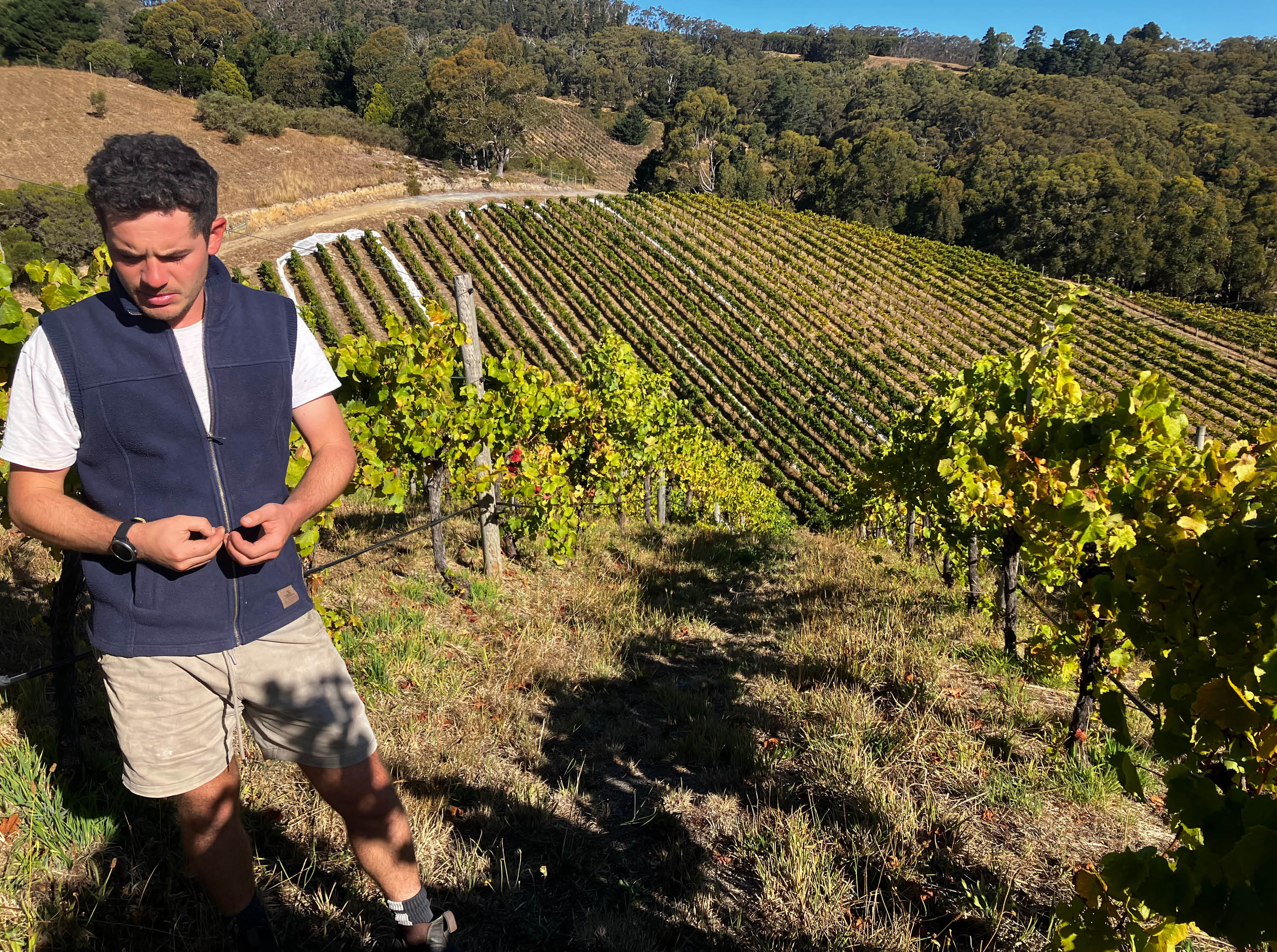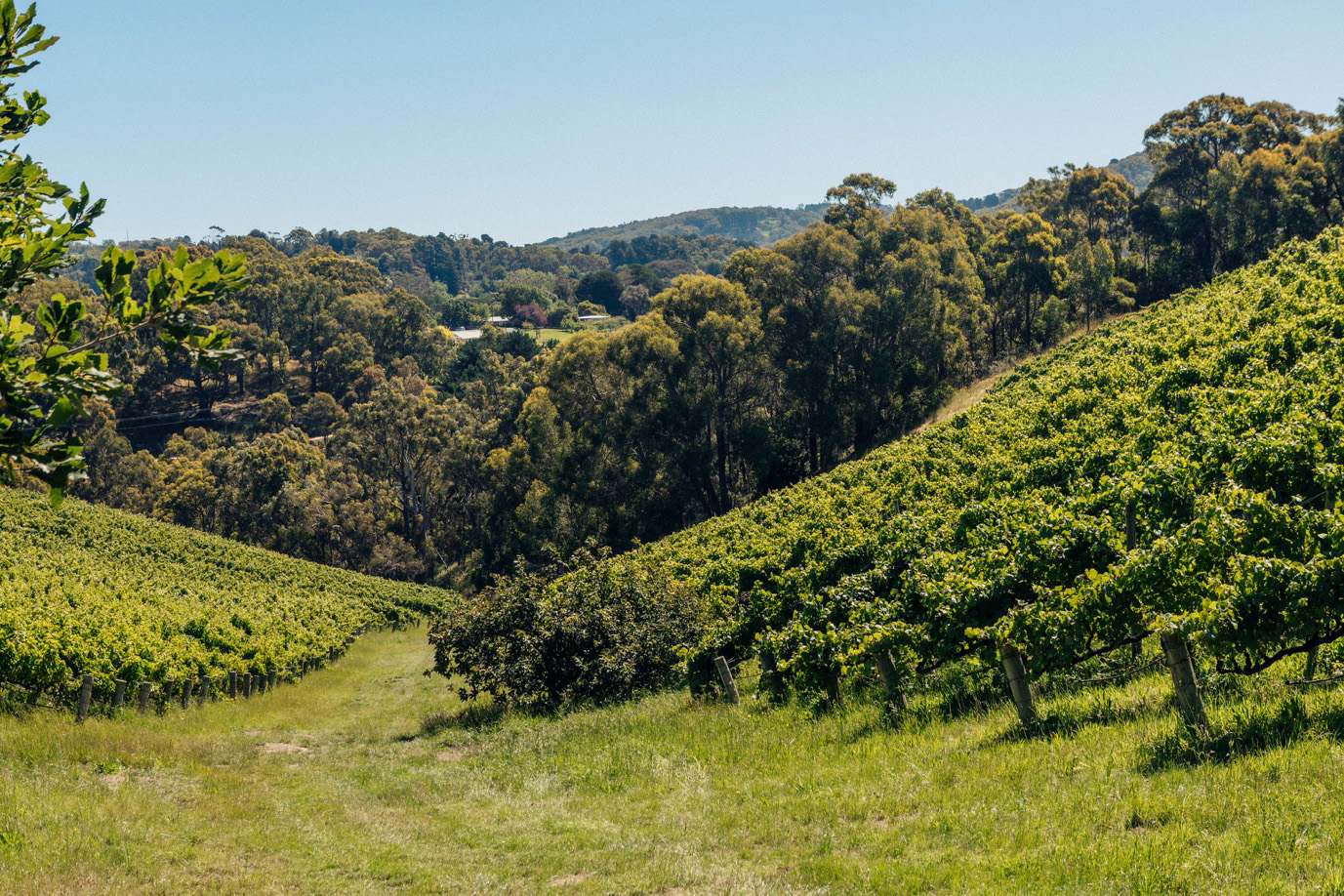
About
"I am Sholto Broderick, a second-generation winemaker and grape-grower of Basket Range Wine, a small family winery in the central Adelaide Hills. We are estate-focused, based on our vineyard. We produce approximately 2000 cases per year.
Our Story
My father, Phillip Broderick, planted the original vineyard in 1980 at our previous adjacent property in Basket Range. He was interested in Bordeaux varieties and took advice in the first plantings and the winemaking from contemporary pioneering Adelaide Hills winemakers, such as Brian Croser (Petaluma) and Stephen George (Ashton Hills). The original vineyard was smaller, planted to Cabernet Sauvignon, Malbec, Merlot, Cabernet Franc and Petit Verdot. This was the establishment of Basket Range Wine. Phillip made approximately 150-200 dozen per year from this vineyard, the first vintage being 1983.
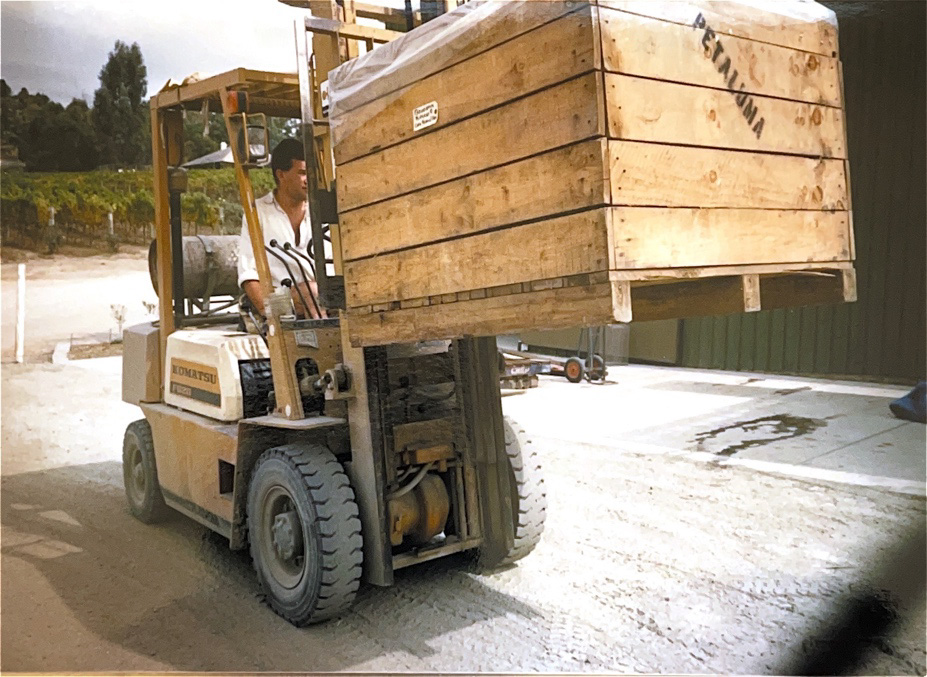
(Phillip Broderick during the first vintage of Basket Range Wine (1983)).
In 2000, our family acquired our current property and planted the vineyard (13.5 acres) which is comprising of Pinot Noir, Chardonnay, Cabernet Sauvignon, Merlot, Petit Verdot and Saperavi. Initially the majority of the fruit was sold to local wineries, with Phillip making wine the Basket Range Wine label.

(Phillip in the cellar with his two sons Louis (left) and Sholto (right) in 1998.)
I worked two vintages in France and in local wineries in the Adelaide Hills. I began making wine from our vineyard under the Basket Range Wine label in 2016. At the same time, I took over the viticulture full-time, managing the vineyard organically. Since then production of the label has increased the entirety of the estate, as well as a small amount of Chardonnay from two other local vineyards. I make the wine at our winery, adjacent to the vineyard.
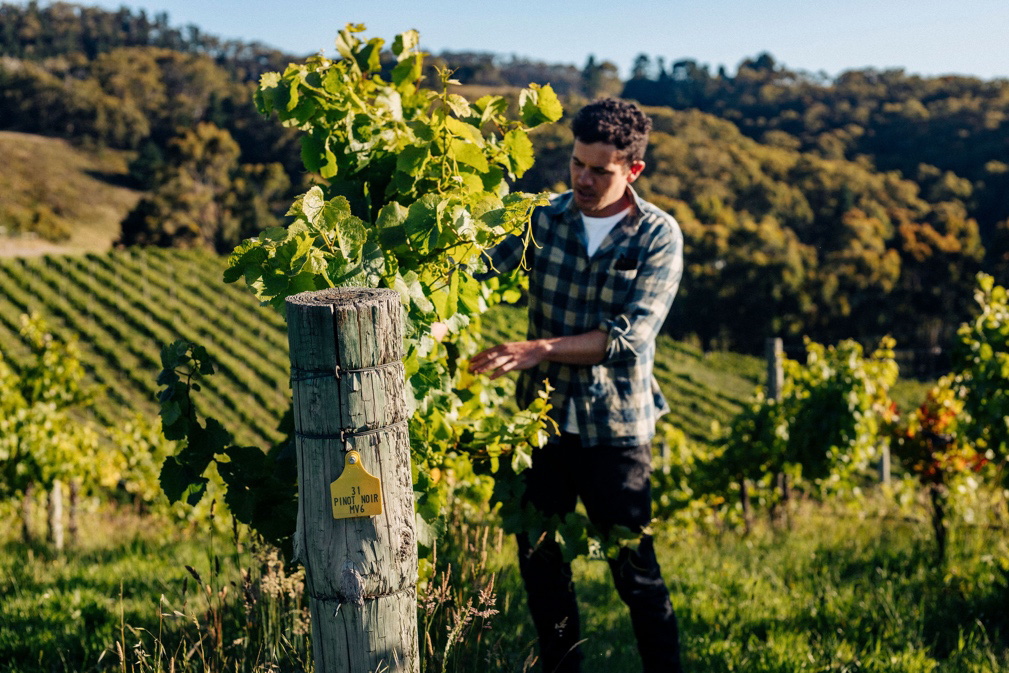
(Sholto in the Pinot Noir block)
Our Vineyard
The Adelaide Hills is a region of varied soils, aspects and microclimates. Our vineyard encapsulates this well, through three main blocks, comprising three different hillside plantings; two are north facing aspects and one is southern facing slope.
The geology is ancient, with a bedrock of sandstone as well as ironstone and quartz distributed through blue and red and blue clay.
The vineyard’s aspects are planted to suit the varieties. Cabernet Sauvignon, Merlot and Petit Verdot are planted to north and west-facing aspects, where the afternoon sun aids in developing these later ripening varieties in our cool-climate region. Pinot Noir and Chardonnay are planted to cooler, more protected, south and east facing aspects.
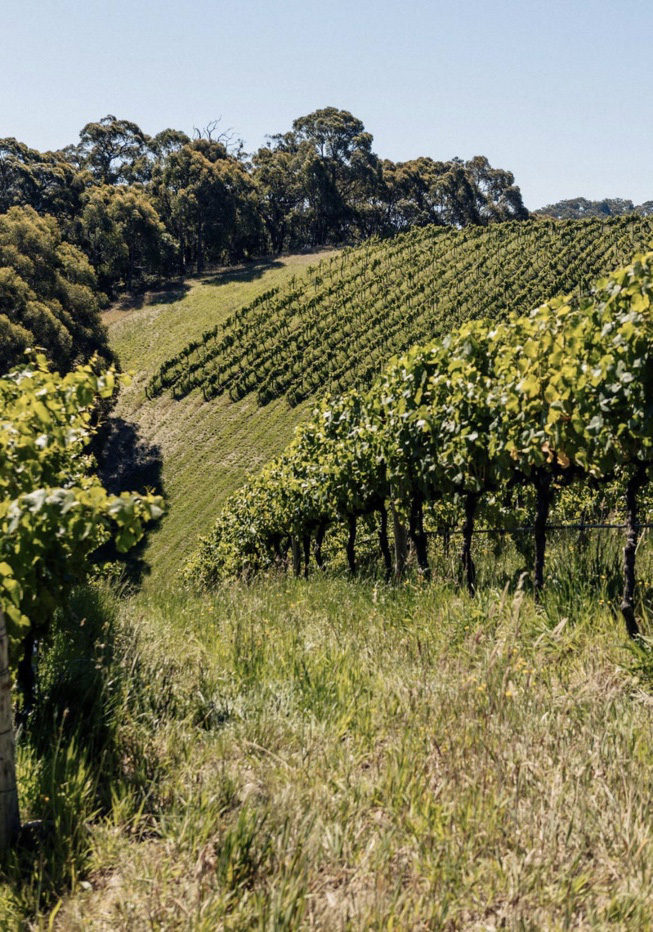
(A north facing aspect of our vineyard looks across to the south-facing block planted to Pinot Noir)
Our vineyard is managed in accordance with organic principles. It is important for us to preserve healthy soil microbiology and a diversity of plants and insects within it. The focus of the Basket Range Wine is the longevity of the vineyard and sustainability of the viticulture.
Wines
My goal is to make wines which reflect the vineyard. To be able to best express different sites, aspects and varieties allows the winemaking process to be relatively simple; using less manipulation, while being conscious in making wines with detail, focus and longevity. Growing and making Pinot Noir and Chardonnay under the label allows for wines being are synonymous with the Adelaide Hills region and its winemaking history. Cabernet Sauvignon, Merlot and Petit Verdot, which were in the first plantings of Basket Range Wine, are those which I find particularly special. The suitability of those plantings to our vineyard and the provenance they hold within the label is something I am excited to be focusing on."
- Sholto Broderick
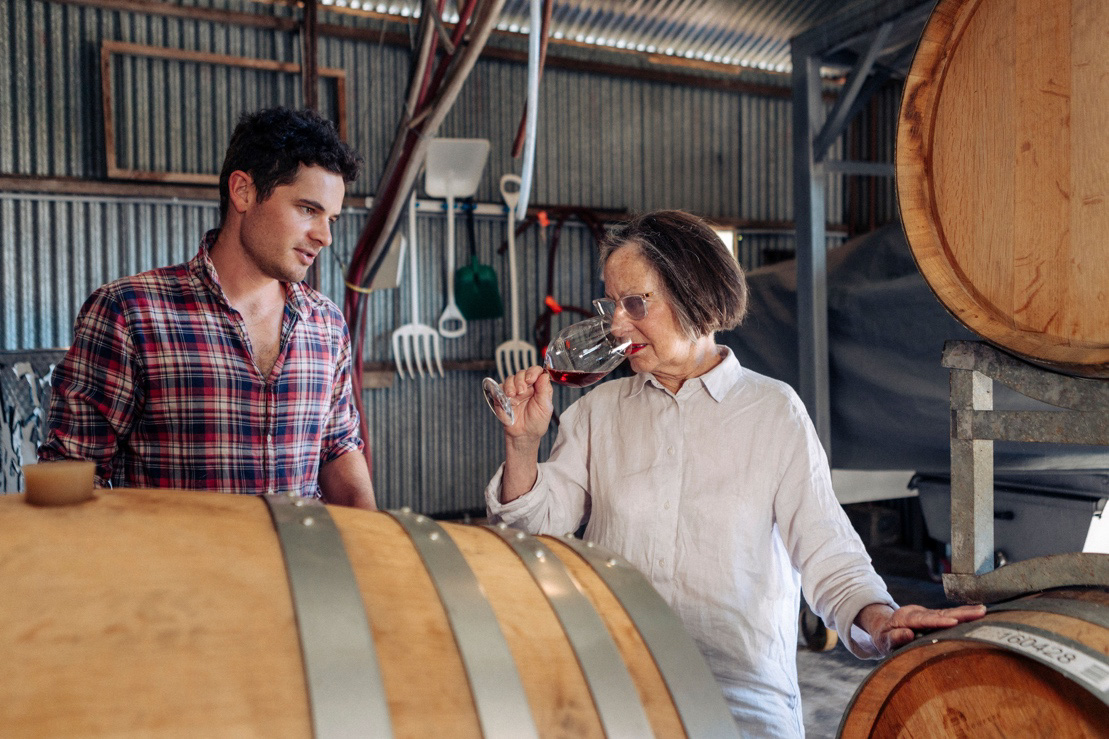
(My mother Mary with me in the winery (2023)).
![]()
2023 Hills Chardonnay
Vineyards
This wine comes from two vineyards within a close proximity of our vineyard and winery.
The Deanery vineyard is situated in Balhannah, 7km east of us. We pick this vineyard first, being in a slightly warmer site. The clones of this chardonnay are i10v1 and Mendoza.
Ali’s vineyard is situated in the heart of the Piccadilly Valley, 8km to the south-west of our vineyard. This vineyard produces fruit with great intensity and acid drive and is a combination of g9v7 and i10v1 clones.
Winemaking
Each parcel of chardonnay was direct-pressed then cold settled before racking to French barrique and puncheon barrels (10% new) for fermentation and maturation for 9 months. Some battonage was used during maturation to help build mid-palate texture.
![]()
2023 Banksia Pinot Noir
Vineyards
Our vineyard situated at our property in Basket Range comprises 75% of this wine. It is predominantly 777 clone Pinot Noir from a north facing aspect, as well as some mv6 from the adjacent south facing block.
The Manyara vineyard in Balhannah comprises the balance of this wine (25%). This fruit is 100% mv6 clone and was harvested at a similar time in late March to the other Pinot in this wine.
Winemaking
Each parcel of fruit for this wine was fermented in 1500 and 2000L vats, with the sparing use of whole bunches, in what was a cooler year. Maceration ranged from 7-14 days, depending on the parcel, with daily gentle pump-overs for cap management. The wine was maturated in seasoned French barrique barrels for 8 months.
![]()
2022 Rose

Pinot Noir and Petit Verdot from our vineyard as well as Syrah, Sauvignon Blanc and Chardonnay from vineyards within a 15 minute drive from us. All components were whole-bunch pressed and barrel fermented then matured in seasoned French barriques and hogsheads over winter. The wine shows expression of fruit, bright natural acidy and texture.
![]()
2022 Bantam

This wine is comprised predominately of Merlot and Petit Verdot from our vineyard. These were macerated with the use of whole bunches and with gentle handling, which gives lifted fruit and a spice from the stalks. The components were then blended with small amount of Chardonnay and Sauvignon Blanc.
This makes for a red wine with gentle tannin and a lifted mid-palate.
![]()
2022 Estate Chardonnay

The fruit is from a two acre block behind the winery. The clones are G9V7 (dominant) and i10v1 (approximately 15%). The fruit was picked on the same day; pressed to French barriques (40% new) for fermentation and maturation for 10 months on lees. The wine is a blend of barrels from this small parcel and shows precision and length.
90 dozen produced
![]()
2022 Estate Pinot Noir

We have a couple of different aspects of Pinot Noir in the vineyard. This wine is a blend of MV6 and 777 clones grown in the coolest part of our vineyard, on a steep south-eastern facing aspect. This allows for more phenolic and flavour ripeness, while retaining brightness.
Soil: Deep loam over red clay and sandstone.
Winemaking: A combination of whole bunch and destemmed ferments in 1500L and 2000L vats. Macerated for 10-14 days with gentle daily pump-overs.
Matured for eight months in French barriques.
140 dozen produced.
Winefront Review by Mike Bennie
Posted on 30 September 2022
“From the Broderick farm, complete with Peugeot 504s adjacent to vineyard and a great, big, cuddly Maremma dog.
Finely wound, dark fruited and tannin shaped pinot noir – cherry fruit on show but brambly, undergrowth-like characters in the mix and bergamot tea tannins a feature. Elegant, refined, smooth, silky yet with building with fine, excellent chew. It’s a serious wine, structured, reserved and tense. It drinks well now but needs a good decant and a big glass, albeit it feels more like it’s future is in cellars. Perfume, presence, poise – pitch-perfect pinot.”
94+ Points
![]()
2022 Estate Cabernet Blend

This wine is the evolution of the style my father made using the same fruit; Cabernet Sauvignon, Merlot and Petit Verdot. These vines were planted first in the early 1980s and at our new adjacent vineyard in 2001. Growing these varieties and making them into wine, I see the quality of the site and concentration of the fruit. Each block sits at a northern facing aspect on loamy clay over sandstone.
The wine shows ripeness of tannin, structure and balance, while having energy and elegance. A reflection of an excellent site for these varieties. This is a Cabernet Sauvignon predominant blend (75%) with Merlot (19%) and Petit Verdot (6%). Each component was fermented in 2000L vats and matured in French barriques for 10 months.
230 dozen produced.
![]()
2021 Estate Merlot

The Merlot (D3V14) sits in the warmer pocket at the top of a gully on a north-facing aspect. This enables balanced phenolic and flavour ripeness, while retaining a bright acid. This is a more structured wine that has been given bottle aging before releasing.
Soil: Blue and red clay over sandstone with schist and ironstone. Winemaking: Destemmed in 1500L and 2000L vats. Gentle pump- overs daily, then matured in seasoned French oak barriques for
nine months.
120 dozen produced.
Winefront Review by Mike Bennie
Posted on 30 September 2022
“Merlot went in the ground pretty early at the late-1970s planted Basket Range Wine estate. Mature vines, mature winemaking approach.
Looking to tension, cool acidity, dark fruit character but a finer expression, and the wine nails it. Feels serious. Dark plummy fruit, brined black olive, a touch of eucalyptus/Aussie bush and a lick of anise. Sits medium weight and quietly powerful in the palate, more so from the ripples of graphite-mineral laced tannins that weave through the fruit and savoury elements of the wine. Those tannins – beautiful, Italianate, in fine ribbons. Excellent example of merlot here. Fine and fancy, refreshing and tense.”
94 Points
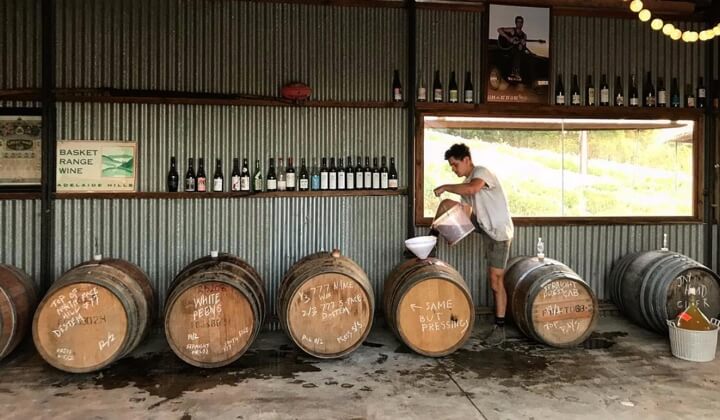 (Image: Basket Range Wine / www.basketrangewine.com.au)
(Image: Basket Range Wine / www.basketrangewine.com.au)
New release enquiry

